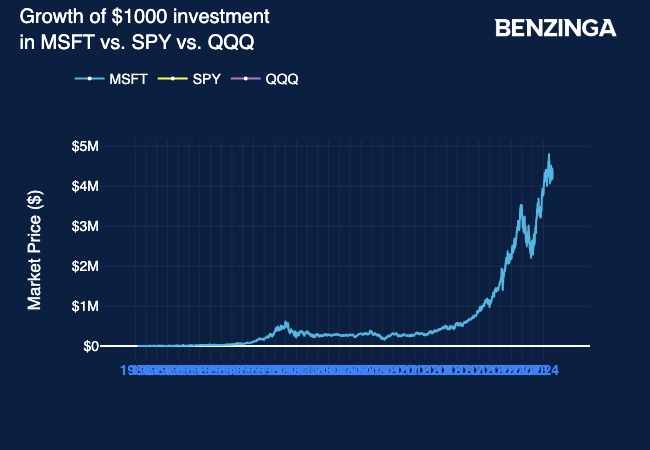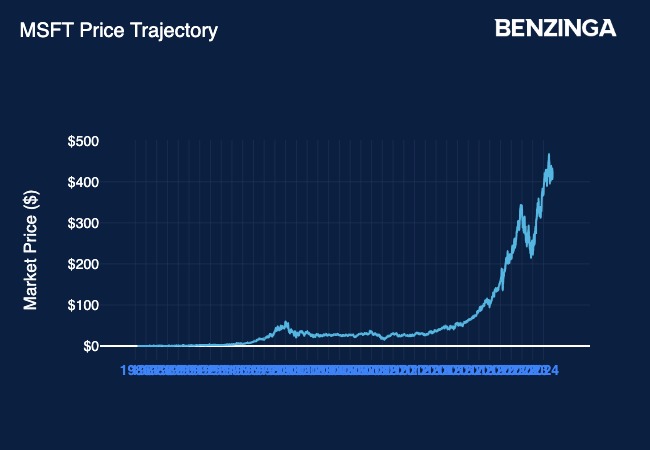Microsoft Corp. MSFT co-founder Bill Gates introduced Windows on Nov. 10, 1983, sparking a software revolution that changed the world of personal computing.
What Happened: 41 years ago, Gates took the stage at the Plaza Hotel in New York City to introduce Microsoft Windows, a product that would redefine the computing landscape.
In those early days, personal computers relied primarily on text-based command lines. Gates and his team saw an opportunity to change that by bringing graphical user interfaces (GUIs) to a broader audience.
However, Gates’ ambitious vision would face an early hurdle.
The Delay That Nearly Derailed Windows
During his announcement, Gates confidently stated that Windows would be ready for release by April 1984, anticipating rapid adoption across IBM-compatible computers.
Yet, developing such innovative software was no small feat, and unexpected challenges pushed back the launch date. This delay extended to November 1985, over a year after the initially promised release. Critics labeled it "vaporware," casting doubt on whether Windows would ever materialize.
Despite early skepticism, Gates' vision proved right. Windows 1.0, while limited, laid the groundwork for a series of innovations that would make Windows the dominant operating system worldwide.
The journey began with basic functionalities like Calculator and Notepad, and as Windows evolved, it introduced new features—from the Start menu in Windows 95 to the robust security features in today's versions.
But what if you had seen this potential back when Microsoft went public on March 13, 1986? Let's crunch the numbers.
The Power Of A $1000 Investment In Microsoft
Microsoft’s IPO price was $21 per share, meaning that a $1,000 investment would have bought you roughly 47.6 shares. Over the decades, Microsoft rewarded its investors with multiple stock splits. Here's a quick rundown:
- 2-for-1 splits: 1987, 1990, 1994, 1996, 1998, 1999, 2003
- 3-for-2 splits: 1991, 1992
These splits resulted in exponential growth in the number of shares held by initial investors.
What’s The Value Of Those Shares Today
A $1,000 investment in Microsoft's IPO would have grown to over $4.35 million today. Similarly, if you had invested $1,000 in the SPDR S&P 500 ETF Trust, an index fund that mirrors the S&P 500, your investment would now be worth $23,710.


A Reflection On Microsoft’s Impact
Microsoft’s journey from Windows 1.0 to Windows 11 mirrors the company's consistent drive for innovation.
Starting as a simple graphical extension of MS-DOS, Windows evolved to introduce features like the Start menu, plug-and-play hardware, and multi-tasking capabilities. Over time, Microsoft didn't just create software but shaped the way we work, communicate, and create.
Last month, Microsoft reported revenue of $65.60 billion for the first quarter, marking a 16% increase from the same period last year. This total surpassed the Street consensus estimate of $64.51 billion.
As Microsoft continues to push the boundaries in AI, cloud computing, and more, it's worth reflecting on the monumental journey that started with Gates' big idea 41 years ago.
The lesson? Sometimes, believing in innovation can yield not only life-changing technology but also life-changing financial returns.
Price Action: Microsoft shares ended Friday’s session down 0.68% at $422.54. In after-hours trading, the stock dipped further to $422.35 at the time of writing, according to Benzinga Pro data.
Read Next:
Disclaimer: This content was partially produced with the help of AI tools and was reviewed and published by Benzinga editors.
Image via Shutterstock
© 2025 Benzinga.com. Benzinga does not provide investment advice. All rights reserved.
Trade confidently with insights and alerts from analyst ratings, free reports and breaking news that affects the stocks you care about.